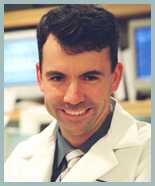
24 Jun How is Patient Safety Affected When Residents Stop Working 24-Hour Shifts?
MedicalResearch.com Interview with:

Dr. Landrigan
Christopher P. Landrigan, MD, MPH
Chief, Division of General Pediatrics, Boston Children’s Hospital
Director, Sleep and Patient Safety Program, Brigham and Women’s Hospital
William Berenberg Professor of Pediatrics, Harvard Medical School
Boston Children’s Hospital
Boston, MA 02115
MedicalResearch.com: What is the background for this study?
Response: An enormous body of literature demonstrates that sleep deprivation adversely affects the safety and performance of resident physicians, as well as individuals across other occupations. Resident physicians are at greatly increased risk of suffering motor vehicle crashes and needlestick injuries, and are at substantially increased risk of making medical errors, when working on traditional schedules that include 24-hour shifts.
We previously conducted a randomized controlled trial in two intensive care units that found resident physicians made 36% fewer medical errors when a scheduling intervention was introduced that eliminated 24-hour shifts but held resident workload constant.
The current study, ROSTERS, was a 6-center study that again introduced a scheduling intervention to eliminate 24-hour shifts in intensive care units. Due to varying resources and unit organization across sites, each hospital developed its own staffing plan to accommodate the intervention.
MedicalResearch.com: What are the main findings?
Response: Contrary to our hypothesis, patient safety worsened on the intervention schedule this time. However, in looking at what happened in each ICU, we saw huge variability across hospitals; the intervention improved patient safety in one unit, was neutral in two, and worsened safety in three.
We conducted additional analyses to figure out what was driving this variability across units. We found that the resident workload – specifically the number of ICU patients that residents cared for each day –differed substantially across units, and it was the units with the highest workloads that fared the worst with the intervention. The unit with the lowest daily baseline rate of ICU patients per resident physician was the unit that saw a significant decrease in medical errors with our intervention.
Overall, in contrast to our prior study, resident physician workload increased in this study when the intervention was implemented. When we conducted a series of secondary analyses controlling for this increase, our intervention schedule no longer appeared to be harmful overall, and in some analyses appeared to lead to improvements in patient safety.
MedicalResearch.com: What should readers take away from your report?
Response: Contrary to our hypothesis, patient safety worsened on the intervention schedule this time. However, in looking at what happened in each ICU, we saw huge variability across hospitals; the intervention improved patient safety in one unit, was neutral in two, and worsened safety in three.
We conducted additional analyses to figure out what was driving this variability across units. We found that the resident workload – specifically the number of ICU patients that residents cared for each day –differed substantially across units, and it was the units with the highest workloads that fared the worst with the intervention. The unit with the lowest daily baseline rate of ICU patients per resident physician was the unit that saw a significant decrease in medical errors with our intervention.
Overall, in contrast to our prior study, resident physician workload increased in this study when the intervention was implemented. When we conducted a series of secondary analyses controlling for this increase, our intervention schedule no longer appeared to be harmful overall, and in some analyses appeared to lead to improvements in patient safety.
MedicalResearch.com: What recommendations do you have for future research as a result of this work?
Response: Viewed as a whole, while the results are still exploratory, we believe it very likely that it was the high resident physician workload that drove the negative results of our study. Future research should directly address this issue.
As hospitals implement scheduling changes to reduce the risk of injuries to patients and resident-physicians that are due to resident physician sleep deprivation, careful attention needs to be paid not to inadvertently increase workload as work hours are decreased.
MedicalResearch.com: Is there anything else you would like to add?
Response: Over a decade ago, the National Academy of Medicine presciently concluded that resident physicians should be limited to no more 16 hours of work in a row without sleep, but that moving to such a system required an investment of funds and personnel to keep workload from rising as hours are decreased. Such an investment never occurred at a national level. Today, as many as 250,000 patients per year continue to die as a result of medical errors, many of which occur in settings where resident physicians care for them. Our research supports the urgent need for an investment in scheduling interventions that concurrently address the dual challenges of excessive resident physician work hours and workloads.
Citation:
Effect on Patient Safety of a Resident Physician Schedule without 24-Hour Shifts
June 25, 2020
N Engl J Med 2020; 382:2514-2523
DOI: 10.1056/NEJMoa1900669
Christopher P. Landrigan, M.D., M.P.H., Shadab A. Rahman, Ph.D., M.P.H, Jason P. Sullivan, B.S., Eric Vittinghoff, Ph.D., Laura K. Barger, Ph.D., Amy L. Sanderson, M.D., Kenneth P. Wright, Jr., Ph.D., Conor S. O’Brien, B.A., Salim Qadri, B.S., Melissa A. St. Hilaire, Ph.D., Ann C. Halbower, M.D., Jeffrey L. Segar, M.D., for the ROSTERS Study Group*
JOIN OUR EMAIL LIST
[mailpoet_form id="5"]We respect your privacy and will never share your details.
[last-modified]
The information on MedicalResearch.com is provided for educational purposes only, and is in no way intended to diagnose, cure, or treat any medical or other condition. Always seek the advice of your physician or other qualified health and ask your doctor any questions you may have regarding a medical condition. In addition to all other limitations and disclaimers in this agreement, service provider and its third party providers disclaim any liability or loss in connection with the content provided on this website.
Last Updated on June 24, 2020 by Marie Benz MD FAAD
